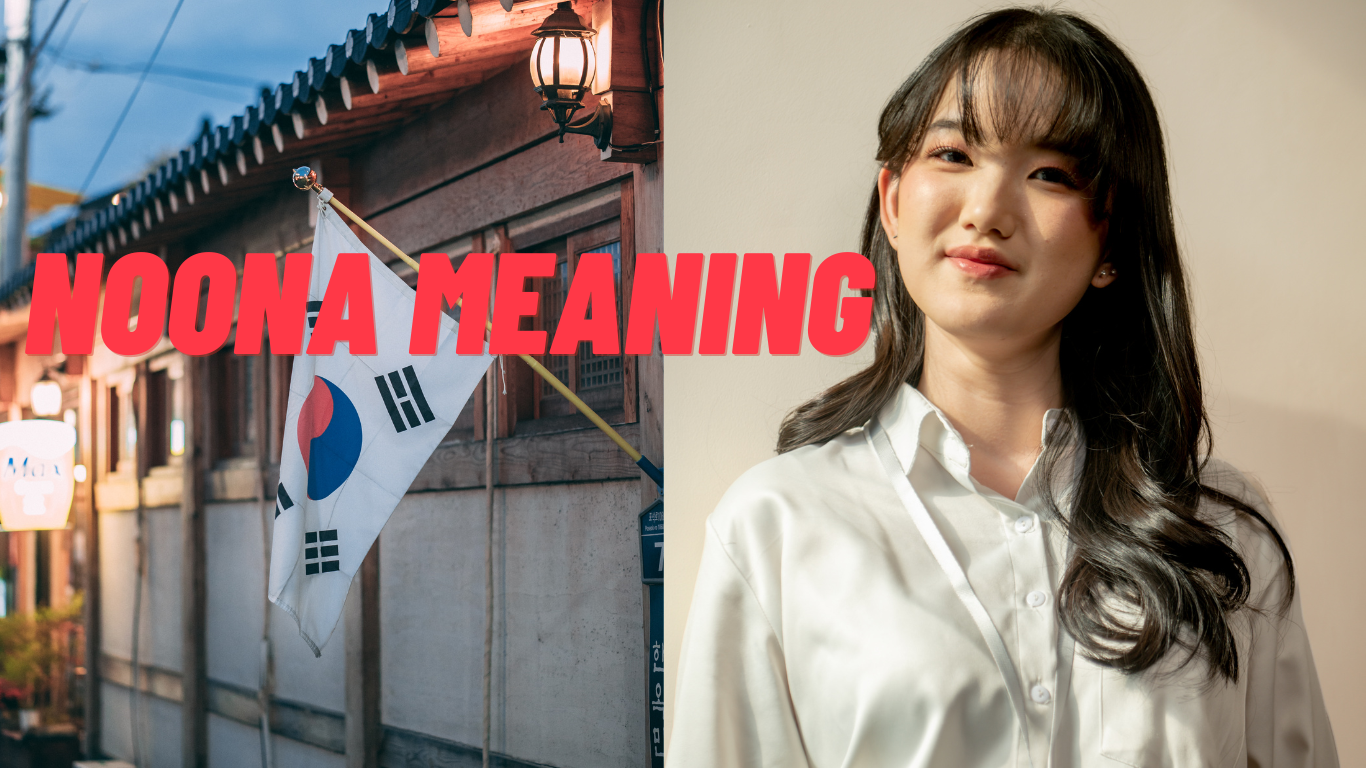In the world of Korean culture, certain terms hold special significance and convey deep social and emotional meanings. One such term is “Noona.” If you’ve watched Korean dramas or are familiar with K-pop, you’ve likely encountered this word. But what exactly does “Noona” mean, and why is it so important? This article delves into the meaning of “Noona,” its cultural implications, and how it’s used in various contexts. By the end of this comprehensive guide, you’ll have a thorough understanding of this term and its relevance in Korean society.
1. Introduction to Noona
“Noona” is a Korean term used by a younger male to address an older female who is not necessarily related by blood. It signifies respect and affection, encapsulating the nuances of age and social hierarchy in Korean culture.
2. Etymology and Linguistic Roots
The term “Noona” (누나) comes from the Korean language and is directly translated to mean “older sister.” It is specifically used by males to refer to older females who are within their social circle but not necessarily family members.
3. Cultural Significance of Noona
In Korean culture, hierarchy and respect for elders are paramount. “Noona” embodies this cultural value by highlighting the respectful relationship between younger males and older females. The term is not just a simple address but a reflection of the deep-rooted societal norms in Korea.
4. Noona in Korean Family Dynamics
Within families, “Noona” is used by younger brothers to refer to their older sisters. It is a term that denotes both familial ties and the inherent respect that comes with the Korean concept of seniority.
5. Noona in Popular Media
A. K-dramas
In Korean dramas, “Noona” is frequently used to build character relationships and dynamics. It often portrays the affectionate bond between younger male characters and older female characters, contributing to the narrative’s emotional depth.
B. K-pop
In the K-pop industry, male idols often refer to their older female fans as “Noona,” creating a personal connection that resonates with the fanbase. This usage bridges the gap between celebrities and their admirers, fostering a sense of closeness.
6. How to Use Noona Correctly
Using “Noona” correctly requires understanding the context and the relationship between the individuals involved. It is important to use it respectfully, recognizing the cultural and social implications.
7. Comparing Noona with Other Korean Terms
A. Oppa
“Oppa” is used by younger females to refer to older males. While it also denotes respect, it carries a different connotation and is often used in romantic contexts.
B. Hyung
“Hyung” is used by younger males to refer to older males. It signifies a brotherly bond and is prevalent in male-male relationships.
C. Unnie
“Unnie” is the female counterpart of “Noona,” used by younger females to refer to older females. It reflects sisterly affection and respect.
8. Noona in Modern Korean Society
In contemporary Korea, the use of “Noona” has expanded beyond traditional boundaries. It is now common in workplaces, social gatherings, and even online communities, reflecting the term’s adaptability to modern contexts.
9. Noona in Relationships
A. Platonic Relationships
In platonic relationships, “Noona” signifies a caring and protective bond. It is a term of endearment that highlights the supportive role of the older female.
B. Romantic Relationships
In romantic contexts, “Noona” can add a layer of sweetness and intimacy. Younger males using “Noona” for their older girlfriends or spouses often emphasize the affectionate and loving aspects of the relationship.
10. Noona in Language Learning
For language learners, understanding and using “Noona” correctly is crucial for mastering Korean social interactions. It is a fundamental term that showcases the importance of age and respect in the Korean language.
11. Common Misconceptions About Noona
There are several misconceptions about “Noona,” such as it being exclusively romantic or only used within families. This section will debunk these myths and provide a clear understanding of the term’s versatile usage.
12. Global Influence of Noona
With the global rise of K-culture, “Noona” has gained recognition worldwide. Its use in international fan communities and media highlights its cultural exportability and influence.
13. Personal Stories and Testimonials
Including personal stories and testimonials about experiences with “Noona” can provide a real-life perspective on the term’s significance. These anecdotes enrich the article with authentic insights.
14. Frequently Asked Questions (FAQs)
1. Can females use the term “Noona”?
No, “Noona” is specifically used by males to address older females.
2. Is “Noona” only used in Korea?
While it originated in Korea, the term is recognized and used in global K-culture communities.
3. Does using “Noona” imply a romantic interest?
Not necessarily. It can be used in both platonic and romantic contexts.
4. What is the difference between “Noona” and “Unnie”?
“Noona” is used by younger males for older females, while “Unnie” is used by younger females for older females.
5. Can “Noona” be used in professional settings?
Yes, it can be used respectfully in professional settings to address senior colleagues.
15. Conclusion
“Noona” is more than just a term; it is a reflection of the deep respect and affection embedded in Korean culture. Understanding its meaning and usage enhances one’s appreciation of Korean social dynamics and enriches cross-cultural communication. Whether you are a fan of Korean media or learning the language, knowing how to use “Noona” correctly will undoubtedly enhance your cultural competence and social interactions.




